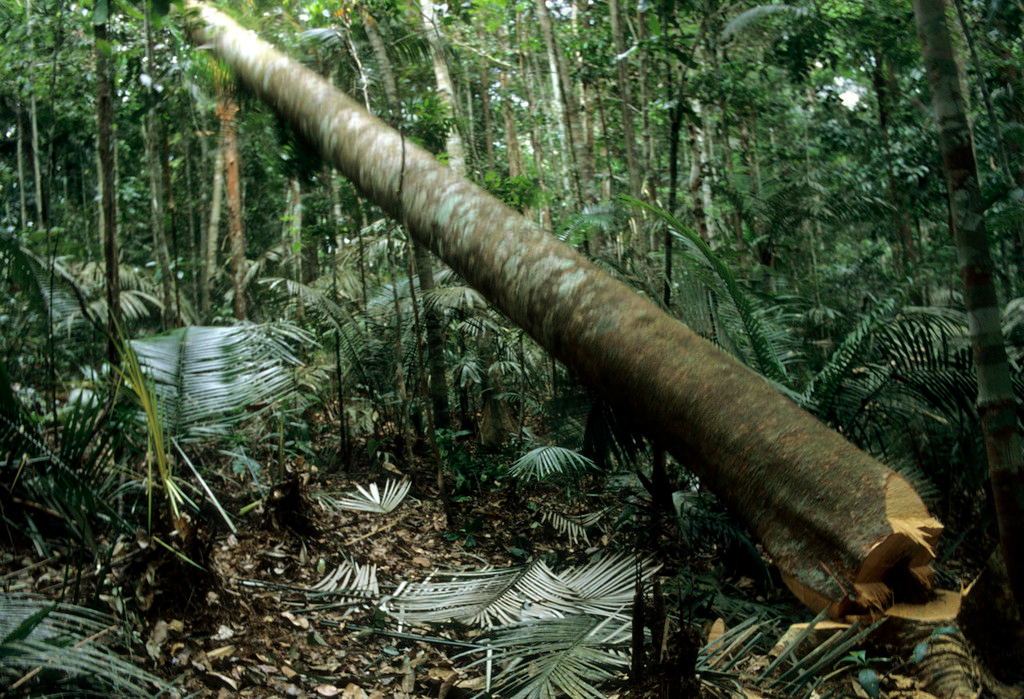Damaging Brazilian food production's image: The 'food x forest' movement
By Marcos Fava Neves | chinadaily.com.cn | Updated: 2019-12-30 10:00

On December 25th we received a Christmas gift, but not as tasteful as the food and drinks we had in our celebrations. The Wall Street Journal article "Brazil's Shrinking Rainforest Prompts Nestlé, H&M, Others to Shake Up Supply Chains" by Jacob Bunge and Paulo Trevisani ended up being another article enhancing the orchestrated movement, led by individuals, activists, NGOs, competitors, politicians, among others, that tries to link Brazilian food production to deforestation of the Amazon. I am calling it the "food x forest" movement.
This is not an attempt to accuse the authors of supporting this movement, but just showing how this piece, among others, contributes to this effort that damages the image and brings new threats to this important activity for the local economy, jobs and millions of families incomes. There are many other similar articles, and I am using this one as the example valid for all the others.
My beef starts with the title. It brings the linkage "food x forest" with an alarming situation using the word "shrinking". The Amazon forest is not shrinking, although the rate of deforestation increased in 2019, it represents less than 0.4 percent of the forest area and it will decrease again with the public efforts being done (not covered in the article).
The title is repeating the August 2019 mistakes with the "global fever" that the Amazon was being completely burned and destroyed. Images of kangaroos and giraffes burning (they don't live in the region), images of dead photographers as if they were from 2019, pictures of fires from another regions, declarations that ended up being not true.
The August "Amazon is Burning" was one of the most fantastic cases of destroying the image of a country that I've seen, should be further studied as the effect of social media. Most of the ones responsible for this "fever" (artists, sportsman, politicians and others) didn't apologize for what was done when they saw the real numbers (the rate of fires was exactly at the average of the last 10 years). We don't need alarming headlines on this very sensitive issue, let's learn from the August mistakes and not repeat them.
The linkage "food x forest" is also seen in the paragraph: "Brazil's accelerating deforestation is pressuring food makers, retailers, investors and commodity traders to shake up supply chains in an effort to push back on land-clearing and achieve environmental goals". The readers with little comprehension of the complexity of what happens in Amazon, by reading the paragraph, will immediately link the responsibility for land clearing directly to the agribusiness agents quoted in the article. Less than 5 percent of what Brazil produces comes from that region, but the idea seems to be…make it 100 percent. Most Brazilian producers are more than 3,000 km away from the region.
The authors also quote some companies such as Nestlé, Hennes & Mauritz AB, Timberland and Vans shoes, Caisse de dépôt et placement du Québec, JBS, Tesco, among others with positive and negative examples. The negative are using the linkage "food x forest". What is the percentage of agribusiness agents that are being pressured? Could we be using some company cases to generalize, to exaggerate?
We've seen this mistake with the "food x fuel" debate 10 to 15 years ago that ended up showing to be less than a scientific-based discussion, since both grew at wonderful rates in the last decade creating opportunities and helping the environment, as the example of corn ethanol in the US, besides several others, shows.
Nestlé gets involved in the WSJ article in a negative way for its image among Brazilian food consumers, since it is a company that has operated in the local market for more than 100 years and generates a lot of employment, opportunities and income. Two paragraphs deserve our attention "…Nestlé SA, which aims to eliminate deforestation from its supply chain over the next three years, has stopped buying Brazilian-produced soybeans from agricultural trading firm Cargill Inc. after a review couldn't trace the oilseeds back to specific plantations, raising concerns that they were produced on converted land…". "…Benjamin Ware, Nestlé's global head of responsible sourcing, who often begins his mornings reviewing satellite images for signs of recently cleared forest areas, said the company has shifted more of its soybean purchasing to the US, where Cargill remains a supplier, and to Europe".
These paragraphs end up taking the reader to think that a solution for the soybean buyers is to stop sourcing from Brazil and move to the US and Europe. Nestlé has a deep knowledge about Brazil and understands that it can source soybeans from lots of internationally certified suppliers in several regions of the country, for instance, cooperatives in southern state of Parana, and don't need to change the sourcing country as the article suggests as a solution. Nestlé also knows about the strict environmental code that Brazilian farmers need to follow is not found in other regions of the world. This was forgotten in the article and the company's interview.
I recommend executives in similar positions of Benjamin Ware (supply chain coordinators in companies) of all that source food from Brazil and also to journalists to understand and then spread the knowledge of the Brazilian Environmental Code (Forestry Code) in their interviews, meetings with consumers, with clients and for new articles. An English copy of this document can be found at the WWF website.
More knowledge about Brazilian agribusiness is also recommended. Pay attention to this paragraph: "Brazil's President Jair Bolsonaro, who took office at the beginning of this year, has exhorted his country's farmers to expand. Brazilian farmers are putting more land to the plow as the country's exports of soybeans, corn and beef have soared, in part because Chinese tariffs on US farm goods have helped make Brazilian crops and meat cheaper…" It suggests that the Chinese tariffs over US production are what led the food production growth in Brazil, when it is well known that the growth in the last 20 years has little relation to this 2018-2019 political fact. There is plenty of literature in English showing why and how Brazilian agriculture had its growth. It is not short-term. Farmers are not expanding because of the president; the expansion is driven by Asian and African demand, mostly.
The WSJ article brings very nice contributions to what some companies are doing to trace their supply chains and work toward more sustainability. If I can leave a central contribution in my comments here, this is the solution. Each company that sources food in Brazil has the opportunity to show their consumers how their food sourcing is done and their sustainability measures. In all food chains reliable and certified suppliers from different sizes and regions can be found all over Brazil, since the country occupies 50 percent of South America and is like a continent. Just don't enter by inertia in this "food x forest" movement that may, at the end, be carrying other interests behind sustainability.
Brazil has proven to be a solution to the world's growing demand, supplying food in quite a sustainable way from South to North, East to West, large and small farmers, cooperatives and other producing agents. People and companies from all over the world are operating in the country to achieve this result. In the last 40 years agricultural area in Brazil increased by 33 percent and the production by 386 percent. Brazilian farmers' efficiency was transferred to global commodity and food prices helping to alleviate hunger in the world via cheaper food.
This was done with growing environmental concerns and obligations, taking to the facts that the country has the largest amount of land totally preserved (67 percent), has 45 percent of its energy consumption coming from renewable sources (10 percent average in OCDE countries), uses only 8 percent of its area to generate food production to the world, has one of the most strict environmental codes and the second largest biofuel policy. Almost 50 percent of the fuel used by the country's car fleet is coming from renewable sources and the city of São Paulo has the cleanest fuel matrix among all the world's megalopolis.
As expected, there are always bad examples of individuals and companies, but Brazil in general is a green/low carbon food supplier, with wonderful examples of sustainability, programs like ABC Cerrado (Low Carbon Agriculture) in more than 8,000 farmers, "Paisagens Rurais" to enhance capacity of implementation of the forestry code and water usage, organics, bio-inputs, RenovaBio Fuel Program, private and collective certifications and information programs, the Embrapa zero-carbon cattle, the payment for environmental services and others that deserve more attention of international media, NGOs and activists. All these could be replicated to other producing countries if these stories are told by international media.
Brazil is not a problem, it is a solution. The "food x forest" movement is making the same mistakes as the obsolete "food x fuel" movement.
Marcos Fava Neves is a professor at the University of São Paulo (FEARP/USP) and Fundação Getulio Vargas (EAESP/FGV) Business Schools in Brazil.
The opinions expressed here are those of the writer and do not necessarily represent the views of China Daily and China Daily website.
























